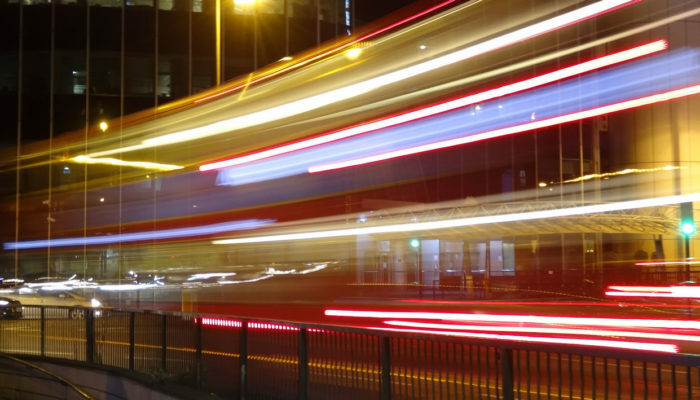
“Oh no, not another thought-piece on the ‘Future of Mobility’” you may be thinking; why all this talk of disruption and transformation when all we want is to make the trains run on time? Or reduce congestion on our roads? Or support cycling and walking with appropriate infrastructure? Or reduce air pollution in our cities? Or reduce casualties by implementing safer, automated vehicles? Or…well, or lots of potentially incompatible ideas.
The reason why we cannot avoid thinking about the Future of Mobility now is that we have a collision between new (or, at least, newly urgent) societal priorities and new technological possibilities. Society has to deal with the side effects of transport such as pollution and climate-changing carbon footprints. On the other hand, technologies, particularly digital technologies, have transformed other industries and will change the way that we provide transport solutions.
This collision between the change we need to reduce the damage from transport, and the opportunities we may have to provide better transport through new technology, is doubly difficult to deal with because of the different ways that these drivers act on us. Government is the mechanism that society uses to address big challenges such as climate change. Industry (for which we can read ‘money-making companies’) is the way that new technological opportunities feed into the economy. ‘Technology push’ meets government’s obligation to maximise the public benefit.
The structures and processes we have evolved over the years to provide and manage transport were designed before these challenges and opportunities emerged. For example, the Department for Transport (DfT) has evolved to deal with the last century’s need to provide for more, better, safer roads to drive internal combustion engine vehicles on. Few, if any, of the underlying assumptions about what society needs from that part of the transport infrastructure may be valid in the future.
In my experience no-one involved in the transport sector is anything other than thoughtful, well-intentioned and determined to create the best outcomes. They are all ‘rational actors’ but are working within a system that may no longer be optimally designed to deliver what we need.
We need an open public debate about what we want from transport, and we need to start by recognising that transport is a ‘derived demand’; transport is not there for its own sake. People travel in order to go to work, or see their family, or take their children to school; let’s explore how we can meet those needs without assuming that only the traditional range of transport options are available.
“Easy to say”, you may think, “but what, practically, can we do to make that a reality?”. Let me make a modest proposal. At the moment the vast majority of roads in this country are built and managed by local authorities. This ought to give the decisions made democratic legitimacy but, in practice, these organisations do not have the resources to understand and adopt new, better solutions. Money sent from the centre to the authorities ends up being spent in old-fashioned ways for lack of better alternatives that can be justified on the basis of evidence.
A rolling programme of pilots and demonstrators, led by central government (i.e. the DfT) working closely with industry, could deploy new solutions and prove the technical and business cases. Parallel public involvement could strengthen the link to society’s needs. Subsequent funding for local authorities could reference the pilots and facilitate a roll-out across the country. This, of course, is just describing best practice today…but that means nothing is stopping us doing this everywhere, every time.
About the Author
This post was written by Paul Campion. Paul is Chief Executive Officer at TRL
